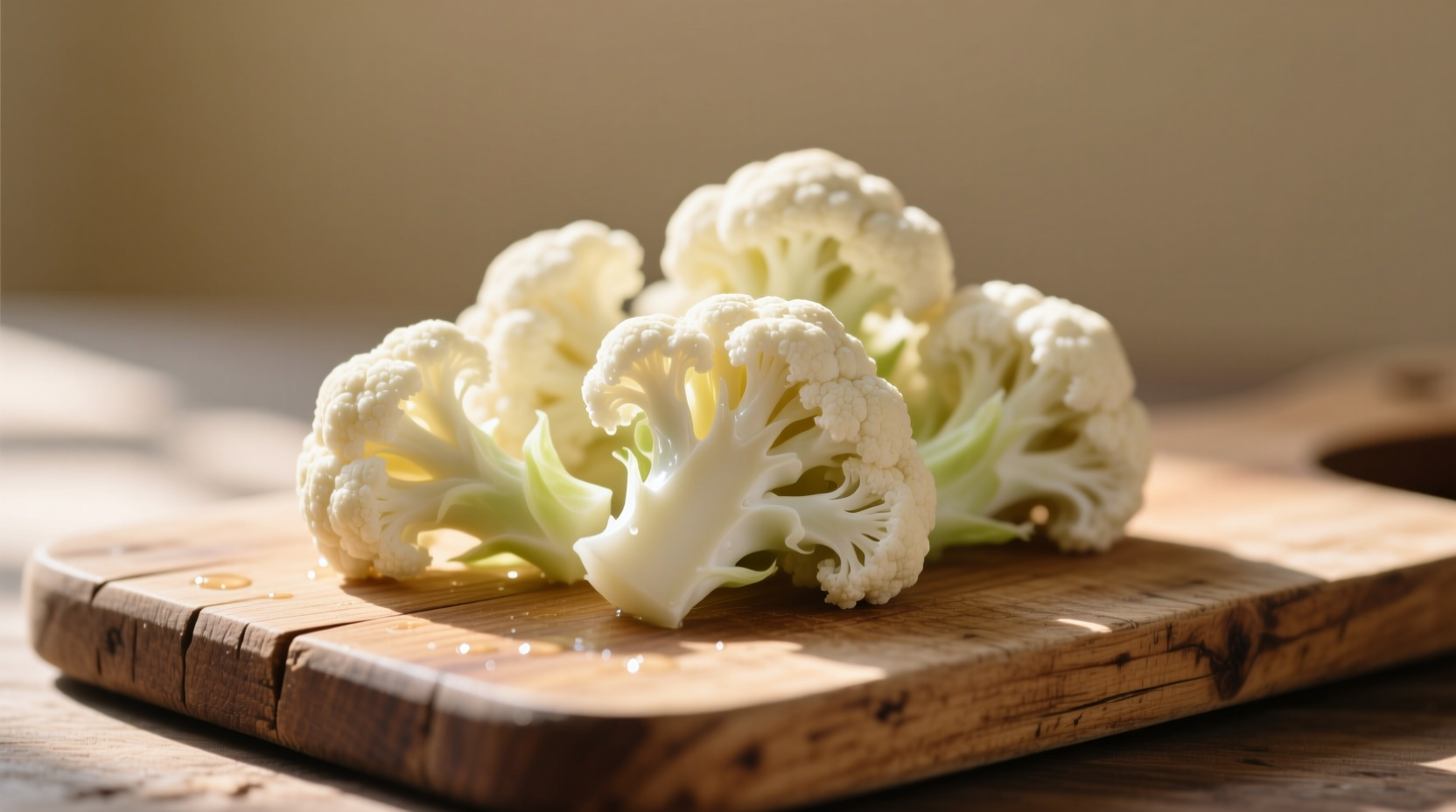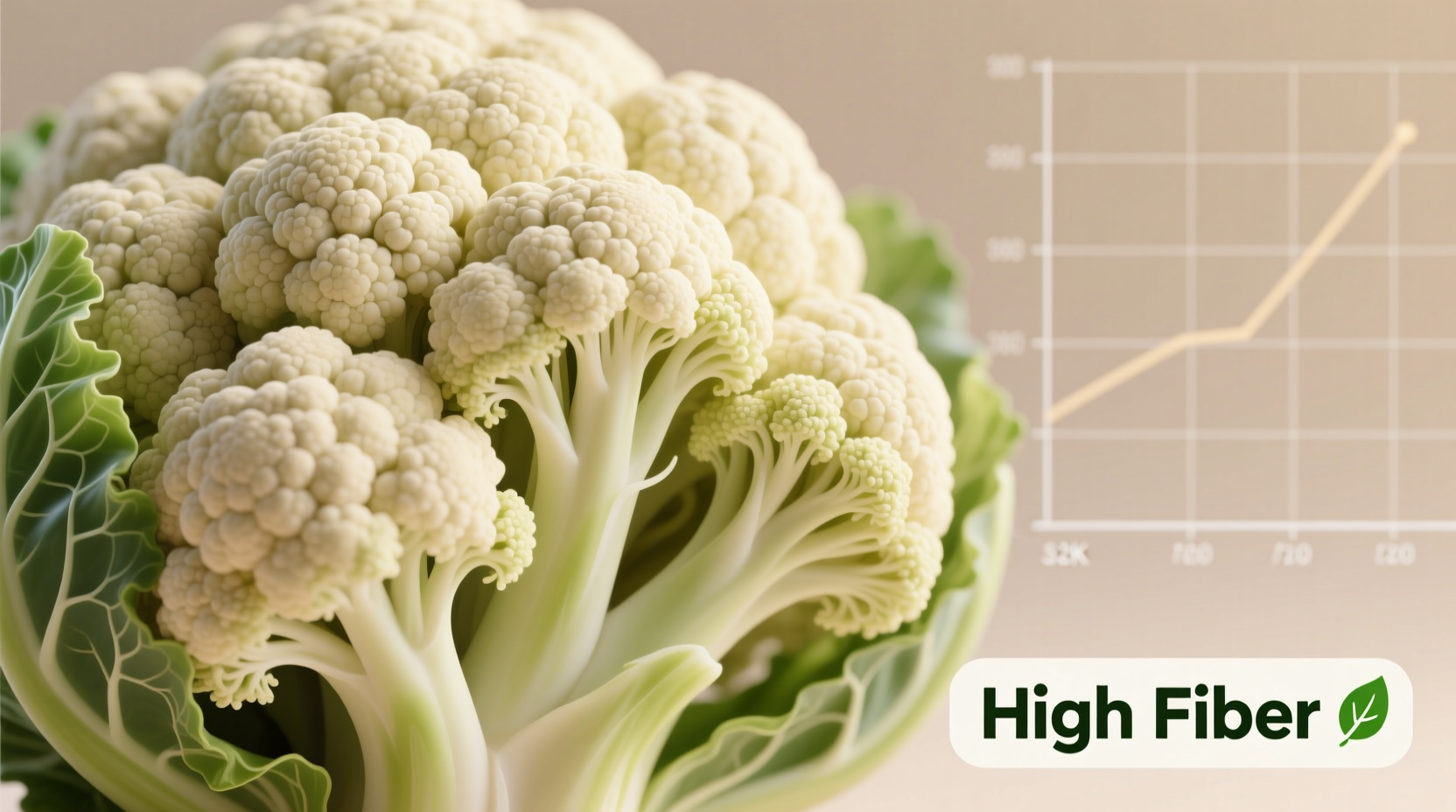When evaluating whether is cauliflower high fiber, the answer becomes clear through nutritional analysis. This cruciferous vegetable packs a significant fiber punch while remaining low in calories, creating an ideal profile for those seeking to boost their fiber intake without excess calories.
Understanding Cauliflower's Fiber Content
Cauliflower delivers 2.5 grams of dietary fiber per 100-gram serving according to the USDA FoodData Central database. This fiber comes in both soluble and insoluble forms, each providing distinct health benefits. Soluble fiber helps regulate blood sugar and cholesterol levels, while insoluble fiber promotes regular bowel movements and digestive health.
What makes cauliflower particularly valuable is its fiber-to-calorie ratio. With just 25 calories per 100g serving, you're getting substantial fiber density without caloric overload. This makes it especially beneficial for those managing weight while trying to increase fiber consumption.
| Vegetable (1 cup, raw) | Fiber Content (grams) | Calories | Fiber per 100 Calories |
|---|---|---|---|
| Cauliflower | 2.5g | 25 | 10g |
| Broccoli | 2.6g | 34 | 7.6g |
| Carrots | 3.6g | 52 | 6.9g |
| Spinach | 0.7g | 7 | 10g |
| Green beans | 2.7g | 31 | 8.7g |
This comparison shows that while some vegetables contain slightly more total fiber, cauliflower's exceptional fiber-to-calorie ratio makes it stand out among common vegetables. When considering is cauliflower high fiber compared to other vegetables, it ranks among the top choices for efficient fiber consumption.
Health Benefits of Cauliflower Fiber
The fiber in cauliflower contributes to several important health outcomes. According to research published in the American Journal of Clinical Nutrition, adequate fiber intake is associated with reduced risk of heart disease, type 2 diabetes, and certain digestive disorders.
Specifically, cauliflower's fiber content supports:
- Improved digestion: The insoluble fiber adds bulk to stool and promotes regular bowel movements
- Blood sugar regulation: Soluble fiber slows glucose absorption, preventing spikes
- Gut microbiome support: Fiber acts as a prebiotic, feeding beneficial gut bacteria
- Weight management: High fiber content increases satiety, reducing overall calorie intake
For those exploring is cauliflower high fiber for weight loss, the answer is particularly relevant. The combination of low calories and high fiber makes cauliflower an excellent component of weight management diets. Replacing higher-calorie ingredients with cauliflower-based alternatives (like cauliflower rice or mashed cauliflower) can significantly reduce daily caloric intake while maintaining fiber consumption.

Contextual Considerations for Cauliflower Fiber
While cauliflower is generally beneficial, certain individuals should consider specific factors when incorporating it into their high-fiber diet. People with irritable bowel syndrome (IBS) following a low-FODMAP diet may need to limit cauliflower consumption, as it contains certain carbohydrates that can trigger symptoms in sensitive individuals.
According to the International Foundation for Gastrointestinal Disorders, cruciferous vegetables like cauliflower contain raffinose, a complex sugar that can cause gas and bloating in some people. Those new to high-fiber diets should gradually increase their intake to allow their digestive system to adjust.
When evaluating is cauliflower high fiber safe for everyone, the answer depends on individual digestive tolerance. Most people can enjoy cauliflower's fiber benefits without issues, but those with specific digestive conditions may need to moderate their intake or prepare cauliflower differently (such as cooking it thoroughly) to improve digestibility.
Maximizing Fiber Benefits from Cauliflower
To get the most fiber from cauliflower while ensuring optimal digestion:
- Eat it raw when possible: Raw cauliflower retains more fiber than cooked versions
- Include the stems: The stalks contain significant fiber—don't discard them!
- Pair with probiotics: Combine cauliflower with yogurt or fermented foods to support gut health
- Stay hydrated: Drink plenty of water to help fiber move through your digestive system
- Gradual introduction: Increase cauliflower consumption slowly if you're not used to high-fiber foods
For those researching is cauliflower high fiber better cooked or raw, raw cauliflower contains slightly more fiber, but cooked cauliflower may be easier to digest for some people. Steaming preserves more nutrients and fiber than boiling, which can leach some fiber into the cooking water.
Practical Ways to Increase Fiber Intake with Cauliflower
Incorporating more cauliflower into your diet doesn't have to be complicated. Try these simple strategies:
- Replace half your mashed potatoes with mashed cauliflower
- Add raw cauliflower florets to salads for extra crunch and fiber
- Use cauliflower rice as a base for stir-fries instead of white rice
- Blend steamed cauliflower into soups for added creaminess and fiber
- Create cauliflower pizza crust for a high-fiber alternative to traditional crusts
When considering is cauliflower high fiber worth incorporating daily, the nutritional profile suggests it's an excellent choice for regular inclusion in a balanced diet. Its versatility makes it easy to incorporate into multiple meals throughout the day.











 浙公网安备
33010002000092号
浙公网安备
33010002000092号 浙B2-20120091-4
浙B2-20120091-4